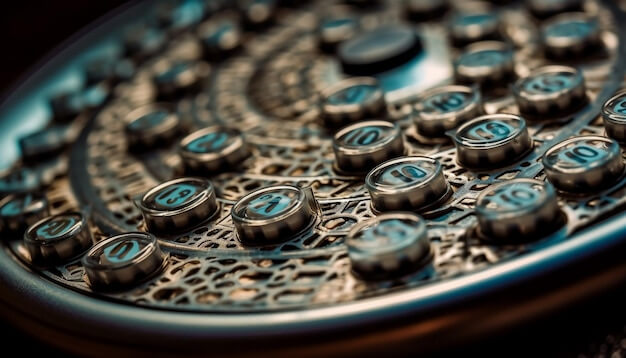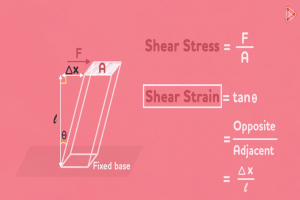Copper Alloys and CNC Machining: An Introduction
In the world of Computer Numerical Control (CNC) machining, materials play an essential role in producing quality results. Among these materials are copper alloys, specifically C10100 and C11000. Copper alloys exhibit outstanding electrical conductivity, ease of fabrication, corrosion resistance, and they also have notable mechanical properties which make them a popular choice for various manufacturing industries from electronics to automotive parts. They come in different varieties, each offering unique advantages depending on their specific compositions. Two of the most commonly used forms in CNC machining include C10100, often referred to as Oxygen-Free Electronic (OFE) copper, and C11000, known as Electrolytic-Tough-Pitch (ETP) copper. While both display excellent conductive attributes and malleability, their individual characteristics dictate what applications they’re best suited for.
Understanding Copper Alloys: C10100 vs. C11000
A copper alloy is a blend of copper with one or more other metals, created to enhance specific properties such as hardness, resistance against corrosion, or machinability. Two popular members in this family are the C10100 and the C11000.
The C10100, commonly known as Oxygen-Free Electronic (OFE) copper, boasts an impressive 99.99% purity level which makes it ideal for applications requiring high conductivity. In contrast, C11000, also referred to as Electrolytic-Tough-Pitch (ETP) copper, maintains a slightly lower purity level at 99.90%. It compensates for this minor shortfall through superior suitability for fabrication processes due to added oxygen content.
- C10100 is renowned for its features like supreme electrical and thermal conductivity, outstanding formability, and excellent joining capability.
- C11000, although slightly lesser in conductive properties, scores highly on mechanical strength, making it ideal for products where sturdiness is vital alongside good conductivity.
These alloys serve divergent purposes and selecting between them largely depends on the specifics of the end application.
Properties and Characteristics of C10100 Alloy
C10100 alloy, also known as oxygen-free electronic copper, is valued for its high electrical conductivity and thermal conductivity. It exhibits excellent formability and solderability, making it suitable for electrical and electronic applications. The alloy’s properties make it ideal for precision machining processes, ensuring high-quality components for various industries.
Applications of C10100 Alloy in CNC Machining
The unique properties of C10100 alloy make it a preferred choice in Computer Numerical Control (CNC) machining. Its high electrical conductivity, coupled with its pliability and resistant nature, enables superior quality machining processes. The alloy’s thermal characteristics allow for efficient cooling during machining operations, thus minimizing damage to the tools utilized.
This particularly sturdy copper compound has found substantial use across various industries like automotive, construction, and electronics among others. For instance, in the automobile industry, C10100 is used in manufacturing components such as radiator cores, air conditioning tubes, and heat exchangers due to its excellent corrosion resistance. Similarly, in the construction sector, this alloy’s anticorrosive property under harsh conditions makes it ideal for building materials including roofing sheets, hot water tanks, and cladding. In terms of electronics, C10100 is an optimal solution to create wiring because of its being an exceptional conduit of electricity and heat dissipation attributes.
Properties and Characteristics of C11000 Alloy
The C11000 alloy, also termed as Electrolytic-Tough-Pitch (ETP), exemplifies unique properties which make it highly desirable in CNC machining. This copper-based alloy possesses excellent thermal and electrical conductivity, topped with a high degree of ductility. Physically, it is recognized by its distinctive red-orange metallic hue.
- Physical Properties: The specific gravity of C11000 alloy averages at 8.92 g/cm^3 and its melting point typically ranges between 1,981-2,017 °F (1083–1100 °C). Its tensile strength varies from 46 to 50 ksi, yielding a competitive rating on the Brinell hardness scale – approximately 80 HB.
- Machining Capabilities: C11000 exhibits an impressive machinability rating of 20%, rendering it relatively easy to machine using established chip breakers and standard cutting fluids. Due to its excellent hot and cold working abilities, this alloy responds well to all types of traditional forming processes.
- Usage Example: Owing to its superior ductility, C11000 finds wide application in intricate plumbing pipe systems where resistance to deformation under compressive stress is crucial.
Applications of C11000 Alloy in CNC Machining
The high electrical conductivity and ductility make the use of C11000 alloy highly prevalent in CNC machining. This alloy, often referred to as Electrolytic Tough Pitch (ETP) copper, is predominantly utilised for manufacturing components requiring excellent thermal management capabilities. Such usage can be observed in industries such as electronics and telecommunications where heat sinks, circuit boards and connectors are commonly made from this alloy.
- Electronics Industry: In the electronics industry, the ETP copper finds extensive application primarily due to its outstanding thermal properties that aids efficient cooling and improved system performances.
- Telecommunications: C11000 alloy’s superior electrical conductivity allows it to be used extensively in fabricating transmitter antennas, waveguides and coaxial cables within the telecommunications sphere.
A detailed analysis unveils additional uses of C11000 alloy in other sectors like automotive and power generation for crafting components with high current-carrying ability and robust resistance to corrosion.
Comparing C10100 and C11000 in CNC Machining
In CNC machining, Copper alloys C10100 and C11000 exhibit distinct properties that are crucial to consider for achieving optimal results. The C10100 has higher purity levels, often above 99.9%, making it the preferred choice when corrosion resistance and thermal conductivity are a priority. On the other hand, C11000 is renowned for its excellent machinability, allowing for precise shapes and designs on finished products.
The choice between these two copper alloys depends on the specific application:
- C10100: Best suited for applications needing superior electrical and thermal conductivity as well as anti-corrosive capabilities. It’s ideal for terminals, connectors, heat sinks and high current devices.
- C11000: Known for its easy workability through CNC machines, adding value where intricate detailing or complex geometry is required. Think of electronic components, machine parts or decorative items. Also recognized for good brazing and soldering ability.
A careful evaluation of their variances, as related to your requirement, can guide an efficient selection process ensuring both cost-effectiveness and quality outcomes in CNC machining processes.
Other Articles You Might Enjoy
- Precision Engineering: The Advantages of Using Copper Alloys in CNC Machining
Introduction to Precision Engineering and CNC Machining Precision engineering is a discipline that aims at designing machines, fixtures, and other structures that possess high levels of accuracy and stability. It…
- Precision CNC Machining of Steel: High-Volume Production
Precision CNC Machining and High-Volume Production As an integral part of modern manufacturing processes, Precision Computer Numerical Control (CNC) machining brings about unmatched accuracy and consistency in the production of…
- Material Versatility in CNC Machining: From Titanium to Thermoplastics
Introduction to CNC Machining CNC machining stands as a cornerstone in the manufacturing sector, enabling the precise creation of parts and components. This process utilizes computer numerical control (CNC) to…






